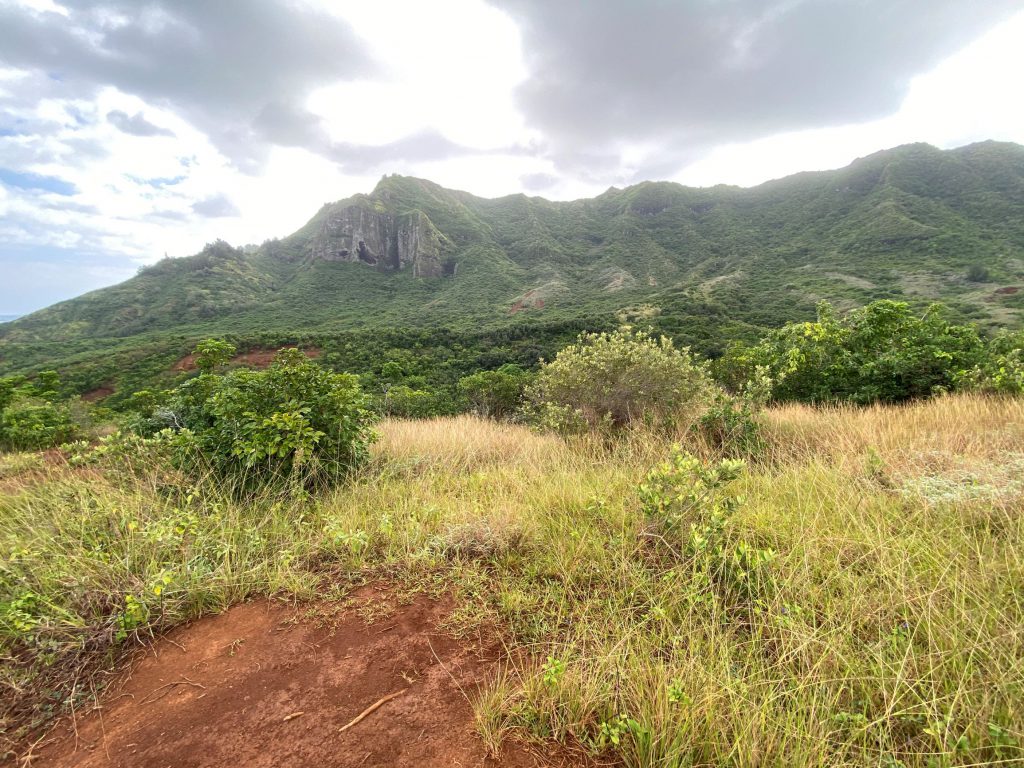
Spoiler Alert: They’re not.
One of the more recent commercials for an RA medication designed to stop joint destruction and curb inflammation features people hiking at dusk, lifting and carrying trees to plant, jumping off a platform about three feet off the ground, zip lining, and riding an ATV on a rugged terrain across a beautiful tropical landscape. This particular advertisement catches my eye each time because, about a year ago, I moved to that tropical landscape. After seeing the ad a few times, I became curious about just how realistic it was for someone with RA to be able to partake in these types of activities.To manage my RA, I get bi-monthly infusions of a biologic and take a cocktail of medicines, including a weekly injection of Methotrexate along with numerous vitamins and supplements.
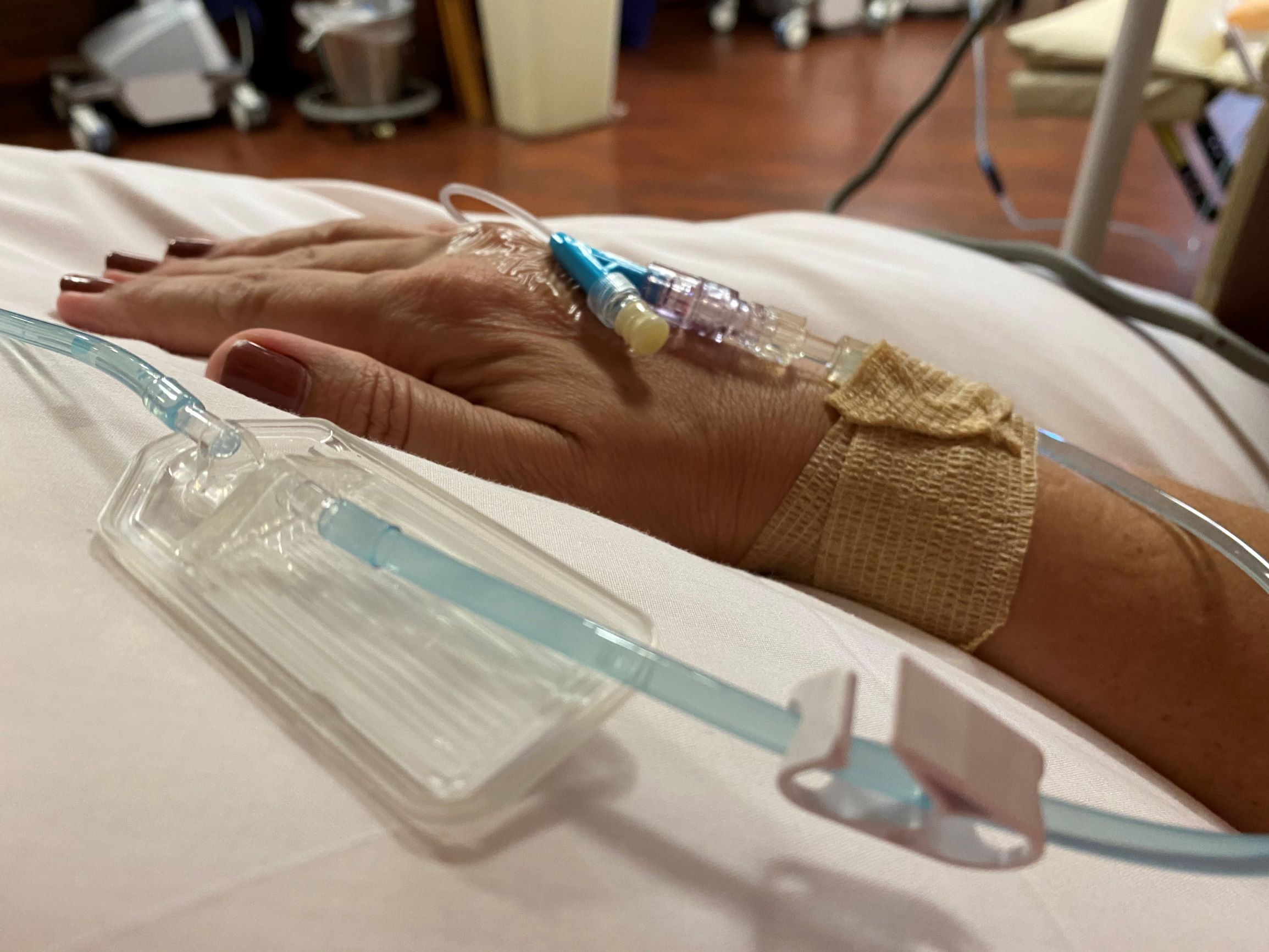 I do not take the medicine advertised in this commercial. I also avoid foods that increase inflammation and wreak havoc on my digestive system, which can spiral into a flare. I take these medications to be able to get up and walk well and have a good quality of life that allows me to independently function, though sometimes with assistive devices. I don’t take all of these medications and supplements to climb a mountain or run down the beach, like this commercial and others portray.
I do not take the medicine advertised in this commercial. I also avoid foods that increase inflammation and wreak havoc on my digestive system, which can spiral into a flare. I take these medications to be able to get up and walk well and have a good quality of life that allows me to independently function, though sometimes with assistive devices. I don’t take all of these medications and supplements to climb a mountain or run down the beach, like this commercial and others portray.
When I have good days, I do what I can to take advantage of feeling well enough to participate, but truthfully, there have not been very many days when I felt no pain in all of the 12 years since I first started getting symptoms. I’ve loaded up on steroids in order to enjoy family vacations packed solid with activities. Frequent use of steroids can cause weakening of the bones and an increased risk of stomach ulcers and internal bleeding when combined with NSAIDs (non-steroidal anti-inflammatory drugs), so I stopped taking steroids altogether. Sadly, this means that I often do the things I want to do while I’m in pain. If I wait for the day when I wake up in remission with no pain, I will be waiting forever, which is why my motto is “There’s no day but today,” (salute to Rent). Do what you can now. This is a big part of why I retired early and moved to Kauai.
Circling back to that ad…
When I saw this ad featuring cool activities, some located in Kauai, I had a moment of excitement to take on my RA, as the ad suggests. Something felt disingenuous about the notion that if RA patients would take on RA by choosing this medication, it would reveal a world of high-energy activities like hiking, zip lining, and picking up trees to plant. Knowing my previous limitations, I tried to be realistic about what I could and could not do on my best days. Since my son was home from college for winter break, after his mandatory 10-day quarantine and negative Covid-19 test, he was free to explore Kauai with us. It was the perfect time to go on an ATV tour and go hiking while using precautions like wearing a mask and physically distancing when around other hikers.
The Hike
Pihea Vista Trail at Koke’e State Park is a moderate hike by hiking standards. The route starts off easy then shifts, requiring traversing slippery, muddy volcanic rock on steep slopes. This trail and I met long ago in BD (before diagnosis) 2003 when I was in fairly good shape and many pounds lighter. While the trail has not changed much since 2003, I certainly have changed quite a bit. I now carry damage from RA and OA (osteoarthritis), degenerative disc damage, chronic inflammation and pain, asthma, and roughly 80 additional pounds. Slippery unstable terrain is kryptonite for someone with arthritis, so why would I intentionally put myself in this situation? Great question. The view is amazing.

Hiking uneven surfaces garnished with tree roots requires constant problem-solving, making it as mentally challenging as it is physically. Should I step left or right? Should I grab this root or that one? Where should I place the pole to get the best leverage and balance myself? How can I avoid using my left wrist which is already swollen and painful? Can I pull myself up without severe pain to my elbow or wrist? Will my knees allow me to make it down this stretch? I guessed wrong a few times, taking a tumble here and there and landing my hiking boot in ankle-deep mud more than once. I got to the last tenth of a mile on the trail where the path shifts from an average of 15% grade to 46% grade (super steep!) with several consecutive inclines leading to a viewing area. As much as I wanted to complete the last stretch, I decided to let my son and husband go ahead and see if the last part was worth it. I did not see it as a failure but rather a smart decision not to die. They returned to share it was not worth it as the view was now limited by fog. Feeling slightly disappointed, I turned around to tackle the same trail back to the starting point. It took a ton of positive affirmations to motivate myself to repeat the route in reverse and make it back to the car. When the road got tough, I recall saying (a few times), “I’ll just straddle this rock for the night.” Seeing the occasional dog paw print in the mud or stepping aside as hikers sprinted past us provided me that motivation to finish.
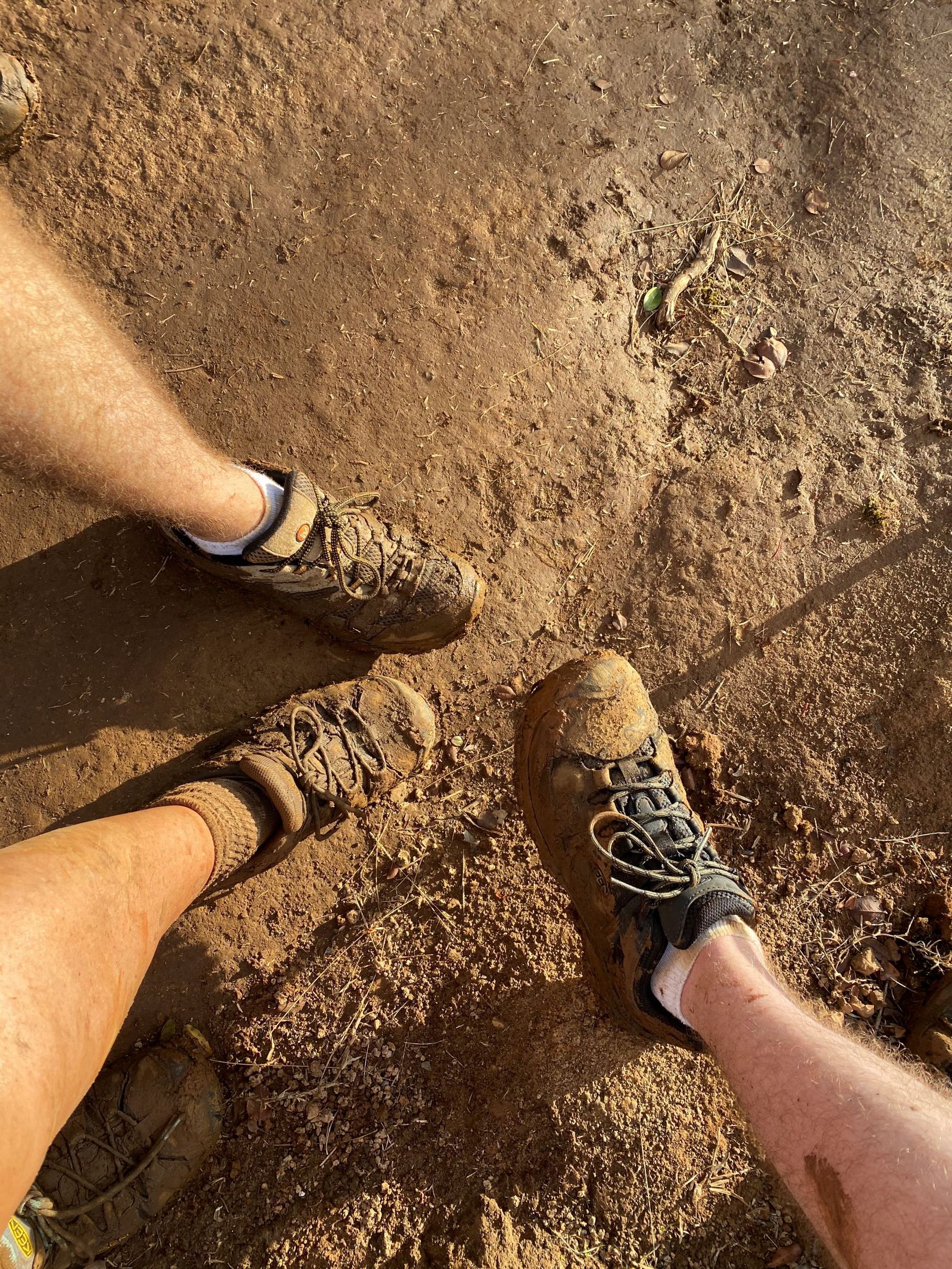 Like mud stains on my boots, the consequences of that hike stayed with me for eight full days. The pain from the 3-hour hike manifested over the first night, and when I woke up, I felt like I had been tossed around violently in a tornado. Unable to walk down the stairs from the bedroom to the living room, I scooted. The pain and joint stiffness increased throughout the next several days causing me to exchange heating pads for ice packs to manage pain in different spots. Inflammation caused nerve compression resulting in sharp, shooting pain through fingers and toes. At one point I had on the TENS unit, ice packs, and a heating pad. Even opening a previously opened olive oil bottle proved to be too much for my joints. Some of my leg pain was muscular, which caused me to scoot down and crawl up the stairs, but my joints took a huge hit, too. My hands, wrists, ankles, and feet were throbbing, and I could never seem to get comfortable sitting or lying down either. Clearly my body was retaliating for the fun I had the day of the hike. It took over a week for my body to mostly recover from the hike, yet while I was recovering, life got back to normal quickly for my family. Two days after that big hike, my husband and son went on second hike while I stayed home struggling to function. They also went zip lining the following day while I opted to stay home and nurse my wounds. How well would I have been able to hold on zip-lining with joints unable to open a plastic bottle?
Like mud stains on my boots, the consequences of that hike stayed with me for eight full days. The pain from the 3-hour hike manifested over the first night, and when I woke up, I felt like I had been tossed around violently in a tornado. Unable to walk down the stairs from the bedroom to the living room, I scooted. The pain and joint stiffness increased throughout the next several days causing me to exchange heating pads for ice packs to manage pain in different spots. Inflammation caused nerve compression resulting in sharp, shooting pain through fingers and toes. At one point I had on the TENS unit, ice packs, and a heating pad. Even opening a previously opened olive oil bottle proved to be too much for my joints. Some of my leg pain was muscular, which caused me to scoot down and crawl up the stairs, but my joints took a huge hit, too. My hands, wrists, ankles, and feet were throbbing, and I could never seem to get comfortable sitting or lying down either. Clearly my body was retaliating for the fun I had the day of the hike. It took over a week for my body to mostly recover from the hike, yet while I was recovering, life got back to normal quickly for my family. Two days after that big hike, my husband and son went on second hike while I stayed home struggling to function. They also went zip lining the following day while I opted to stay home and nurse my wounds. How well would I have been able to hold on zip-lining with joints unable to open a plastic bottle?
And now the ATV ride…
That commercial features people riding in ATVs across scenic Hawaii. Our pending ATV ride reservation was approaching, so I was getting increasingly more concerned I would need to back out of that, too. We reserved a tour across the valleys and hills of Kauai for what seemed like a low-impact activity with great scenery. Riding in the back required constantly gripping the safety bar so after 3 hours, the carpometacarpal joint at the base of my thumbs and my proximal interphalangeal joints were screaming at me. My wrists were already a tad swollen before the ride so all the gripping and bouncing just gave them full permission to balloon up. It was tricky to hop in and out of the ATV at each stop on the tour, but I managed well enough to not draw too much attention. The aftermath of an activity like this is the real challenge. Hip, ankle, and knee pain may have been the result of sitting on the long ride itself and not flexing my joints frequently, not to mention the role the hike from last week might have played. For the next two days I iced both of my hands and wrists in 10-15 minute intervals to combat the inflammation and pain in the joints. A combination of pain meds, topical pain creams, rest, and gentle movement helped me get through the days after the ATV ride.
Technically I did complete a few activities shown in that commercial, but I’m not sure if it was worth the pain that followed them. I enjoyed time spent with my family and I loved the scenery. I just don’t think I needed to participate in such extreme outdoor fun in order to “take on my RA”.
Making realistic goals is not succumbing to RA. I take on RA every day by getting up, getting dressed without help, showering, washing dishes, cooking, working on the computer, and opening a dish detergent bottle or shampoo bottle myself. It’s those daily battles I face that I use to gauge my pain, strength, and fatigue levels. If I can open a twist-top bottle on my own, I cheer inside my head, and when I can’t and need an assistive device such as a jar grip opener, I no longer feel defeated. Using assistance from a device or from a person is not a sign of weakness, rather it’s a means of surviving and accomplishing goals. It’s a bit like using a ladder to reach something. Tools are out there to help us.
When I’m still healing, I need to select activities carefully or I’ll hit a pain wall and be down for the count. I don’t need to climb a mountain or zip line across it to take on my RA, I take it on every day. While it is encouraging to see so many medications on the market and know that ongoing research may lead to additional ones that are more effective, it is frustrating to see the types of situations promoted in some advertisements. Let’s get real and show someone opening a bottle or a door, getting in a car, or going to work and cooking a meal in the same day. These are the real accomplishments.
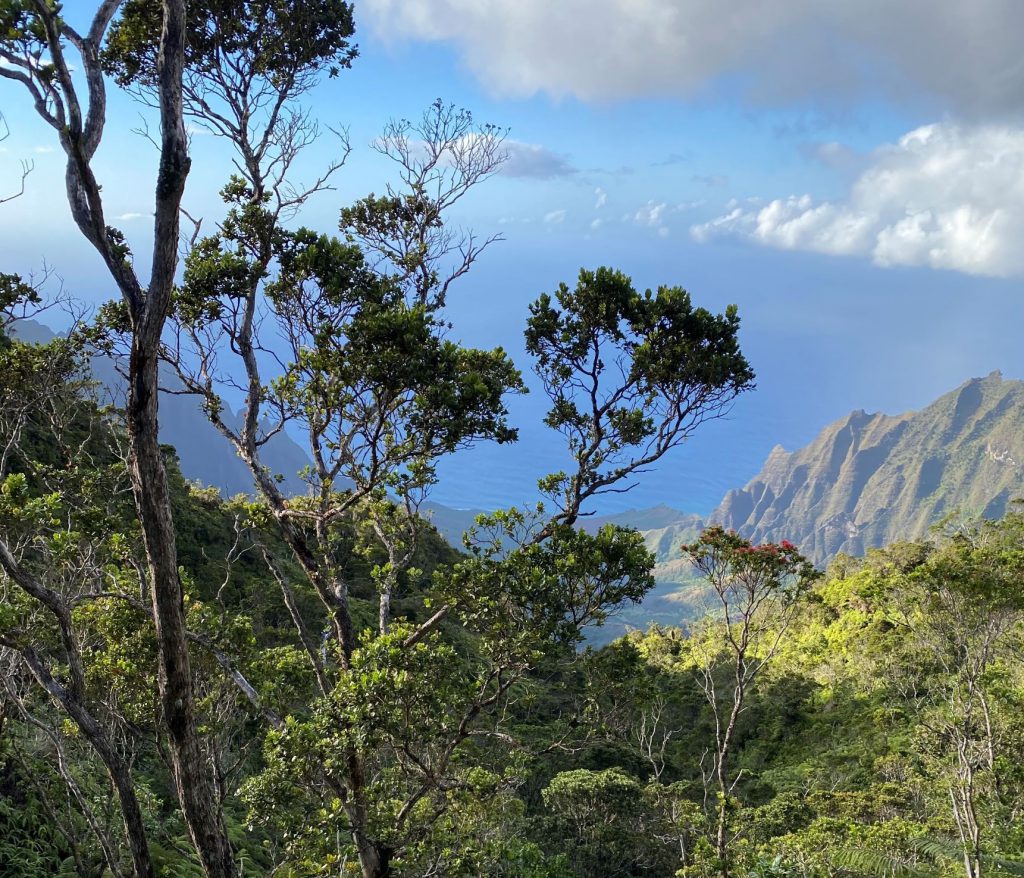


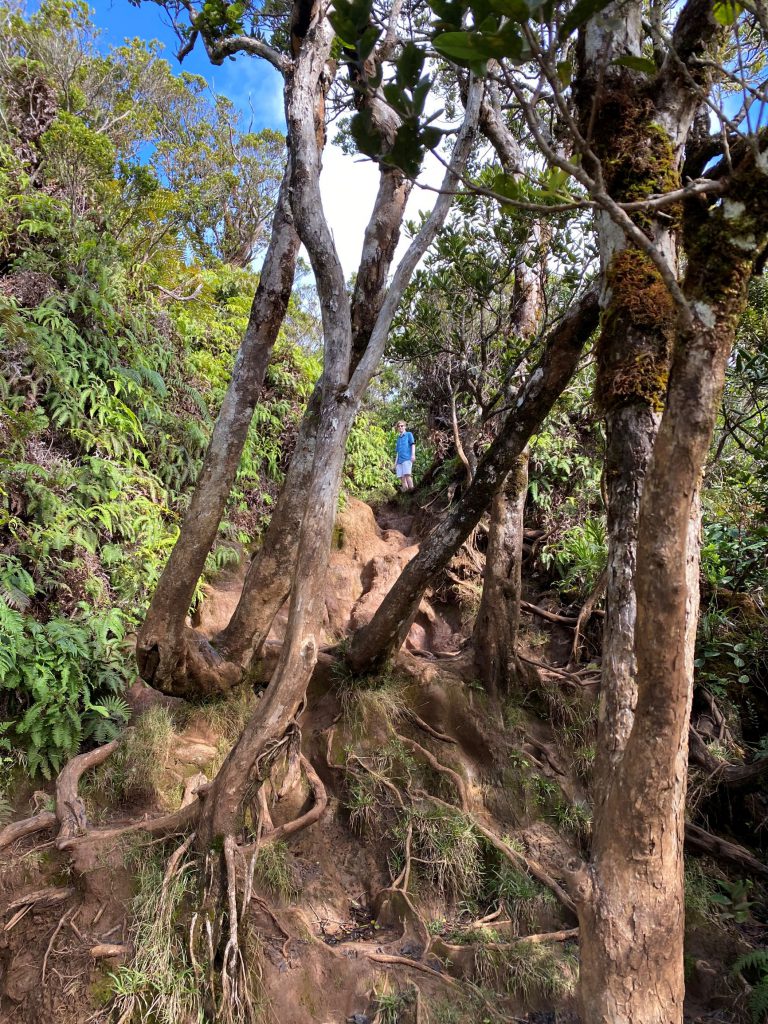
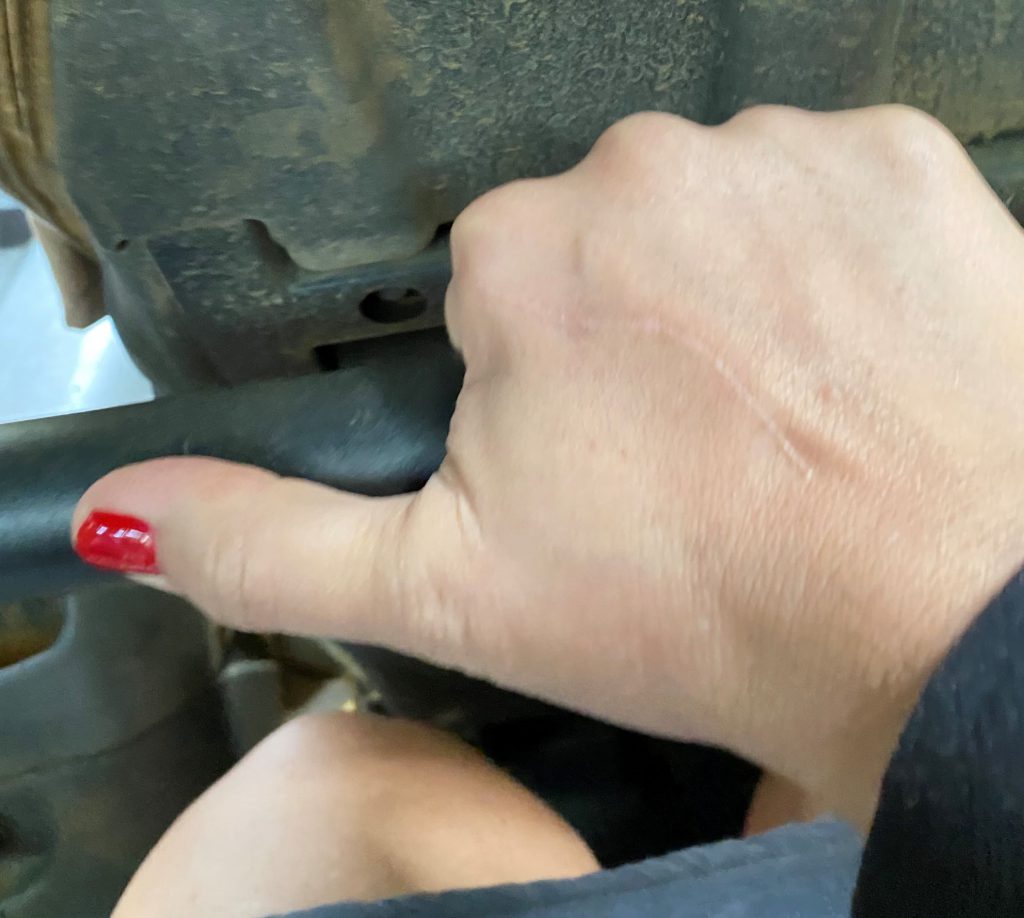
Great job tackling the obstacles on the trail and completing the hike! I know that there were times that you wanted to quit and turn around, but your perseverance and never quit attitude is inspiring.